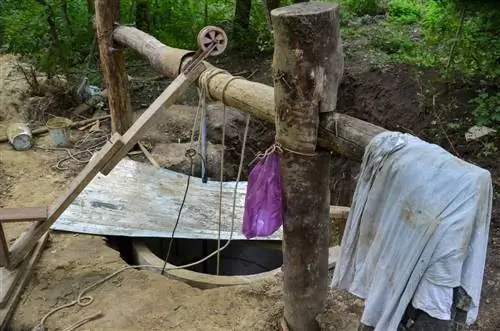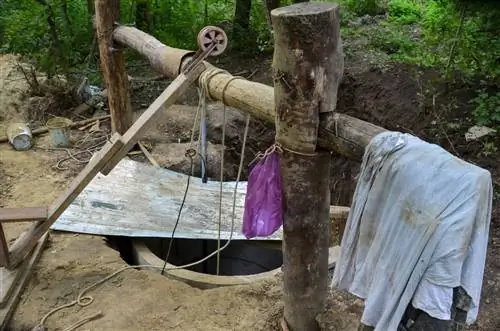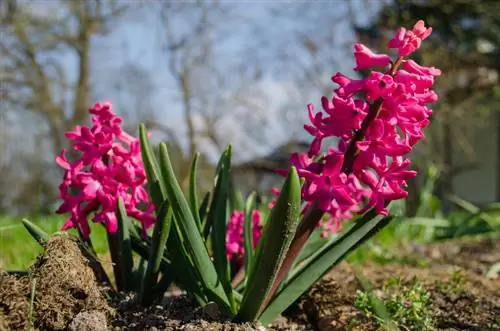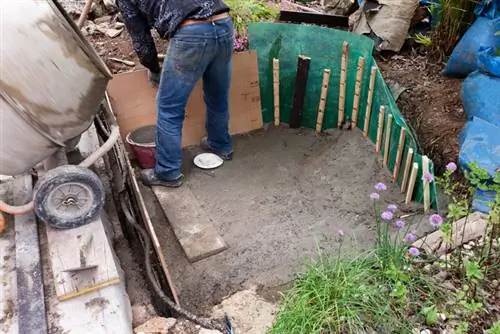- Author admin [email protected].
- Public 2023-12-16 16:46.
- Last modified 2025-01-23 11:21.
Such a garden fountain combines a number of advantages: Instead of spending a lot of money on water supply and wastewater, you simply tap into the groundwater and use it to irrigate your vegetable garden. Of course, this idea is very tempting: But before you run to the nearest hardware store and get the materials you need, you should first read this article.

What types of garden fountains are there when drilling?
When drilling garden wells, you can choose from ram wells and drilled wells: Ram wells are easy to make yourself, but are only suitable for depths of up to 8 meters and low flow rates. Drilled wells require specialist knowledge, but allow for higher water volumes and deeper wells.
Official approval is required before the well is built
Because no one is allowed to just build a well in their garden and tap into the groundwater. In most German communities, such a thing must at least be registered, if not even approved. The regulations vary greatly across Germany: Some municipalities allow wells without any restrictions, in others drilling is only permitted to a maximum depth and still other localities restrict the amount of water that can be withdrawn and its intended use. Before starting any drilling work, first visit the water authority of your district or city administration and inquire about the respective requirements and restrictions.
Which is better: ram well or drilled well?
It is also important to decide on the type of fountain. There are basically two types: The so-called ramming or impact well can also be built by laypeople on their own. This is basically just a metal pipe that is driven into the ground. At the bottom there is a filter through which the water flows into the pipe and is transported upwards by a pump. The serious disadvantage of this type of well is the fact that the maximum output is very low - and it can also be drilled to a depth of a maximum of eight meters. If the expected water consumption is higher or the groundwater level is lower, a drilled well is more suitable.
It's better to leave well building to a professional
To build one, however, requires a lot of expertise and technical skills. For this reason, many gardeners are probably better off having the drilling carried out by an experienced well driller. The costs for this are kept within a manageable range: the professional usually estimates a price in the upper three-digit to lower four-digit range, but brings along the necessary materials, tools and machines. Of course, you can also try to drill a well yourself; you can find detailed instructions for this on the pages of hardware stores (€260.00 on Amazon).
Alternative for garden irrigation: collection points for rainwater
Instead of building or having a well built, you can also install various rainwater collection points in your garden and use them to irrigate the garden. The typical rainwater barrels can be used for this, but stone basins and other containers are also very suitable for this - and on top of that they look even more interesting in terms of design than blue plastic barrels.
Tip
If you no longer have small children, think about building a garden pond. This enables interesting, natural plantings, you can put fish in them and also provide frogs and other amphibians as well as various insects with a habitat that is essential for their survival.






